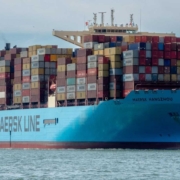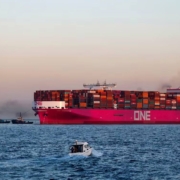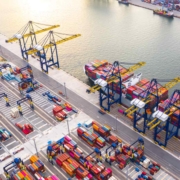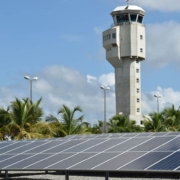Panama Canal: Full Recovery Will Take Longer Than Expected
The Panama Canal, a vital artery for global maritime trade since its inauguration in 1914, is showing signs of recovery in its operational capacity, although experts warn that full normalization may take longer than anticipated. This canal not only facilitates trade between the Atlantic and Pacific coasts but also plays a crucial role in regulating worldwide freight rates.
On May 16, the Panama Canal Authority increased the total number of daily transits from 24 to 31, benefiting mainly Classic Panamax-sized container ships, with a maximum beam of 32.6 meters. Additionally, starting on June 1, an additional transit will be added for Neopanamax vessels, raising the number of daily transits to 32. From June 15 onwards, the permitted draft of ships will also be increased from 44 feet (13.4 m) to 45 feet (13.7 m), allowing the passage of larger and more laden vessels.
This improvement has incentivized some shipping lines to resume their use of the canal. For example, the Yang Ming company, which had avoided this route since the fourth quarter of 2023, returned six months later, and Maersk resumed its “fully oceanic” service on May 10.
Impact on Confidence and Reliability of Itineraries
The disruption in the Panama Canal has had a noticeable impact on itinerary reliability. Before the pandemic, punctuality on the Far East to USGC route was around 60%, a figure that plummeted to 20% during the pandemic and has only recovered to 40%. Additionally, the average number of days of delay for vessels has increased from three to six.
Mitigation Strategies and Climatological Projections
Facing a shortage of water from Lake Gatun, which feeds the canal, the Canal Authority has designed a roadmap that included additional restrictions, reducing transits from 32 to 18 in February 2024. Rainfall is crucial for the normalization of the canal, and climatological projections indicate a variable rainy season, complicated by the effects of climate change on precipitation patterns.
Economic Impact and Comparison with Other Routes
The disruption has also caused a significant increase in freight rates. In January 2024, the differential in spot rates between the Shanghai-Houston and Shanghai-Los Angeles routes exceeded US$2,000/FEU, the highest since November 2022. This has led some lines to consider alternative routes such as the Suez Canal, although most still prefer the Panama Canal for its shorter distance and cost.
Although precipitation is an unpredictable factor, the improvement in the water level of Lake Gatun is a positive sign. However, experts like those at Xeneta suggest that the effects of the drought will be felt for years, not just months. Companies with supply chains that depend on the canal must prepare for a slow and gradual recovery process.
For more news about the maritime industry, visit our website.









